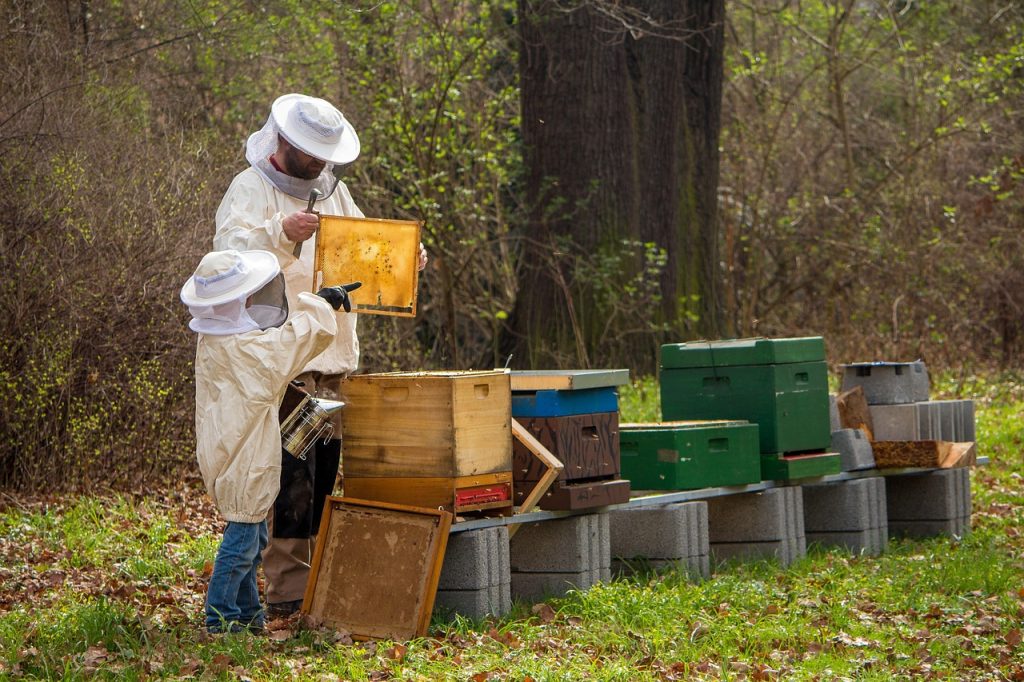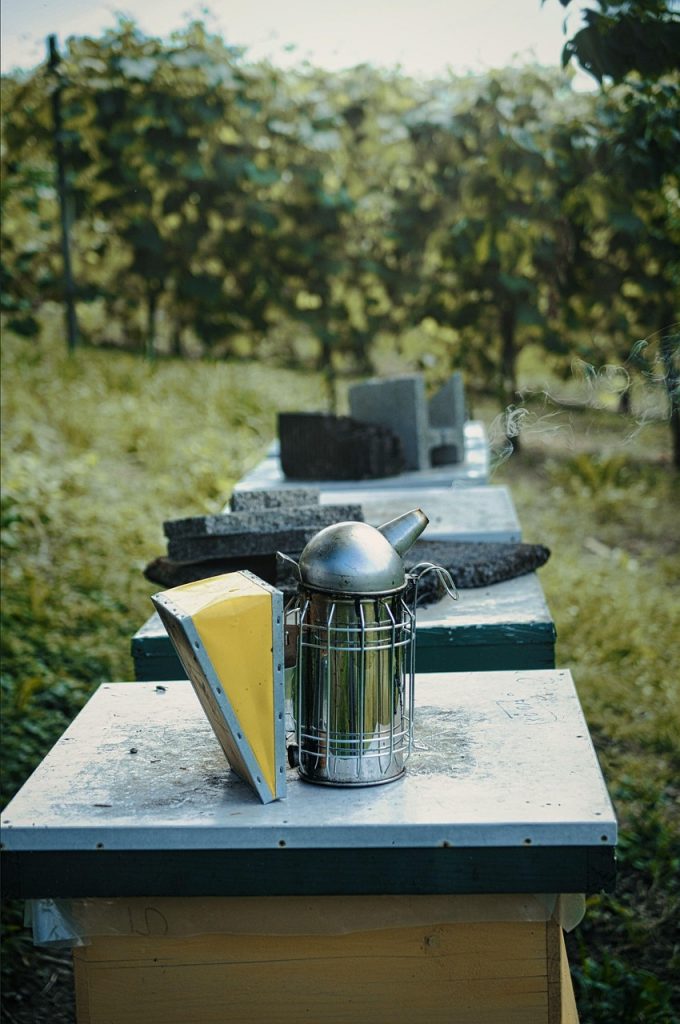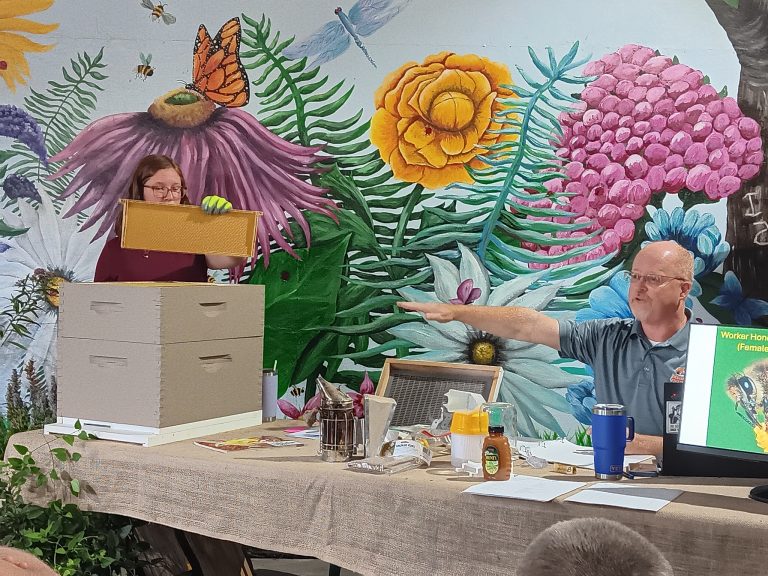Julie Davis
Neal Deremer loves talking about bees.
Deremer, who got his start in beekeeping six years ago and currently maintains five hives, was one of the featured speakers at Grimm’s Gardens July 17 “Successful Beekeeping” presentation. He said he started learning about bees through an online course from Michigan State University, which he was able to take for free because he is a veteran.
He said he continues “to learn stuff every day, every time I am checking my hives.”
“It is a never-ending learning process for me,” he said.
Deremer’s first rule of beekeeping is “don’t look or sound like a bear,” which means don’t wear dark colors around the hives and move calmly and quietly when inspecting hives, which Deremer does about every three weeks, usually in the late morning hours when many bees are away from the hive.
Because bees operate by smell, so Deremer said not to check hives immediately after eating anything containing bananas because worker bees emit a warning scent that smells like bananas, which alerts the hive to danger.
“You want to keep the bees calm,” he said.
Deremer’s apprentice, Mayli Fries, discussed bee roles within a hive and the bee life span.
Worker bees begin hive life as cell cleaners and nurses, then they move up to being guard bees, followed by being foragers, said Fries.
Drones, which lack stingers, exist in the hive to mate with the queen, said Fries. Drones take 24 days to mature from a larva, and queens take 27 days to complete their development. Worker bees require 21 days to mature.
Deremer said at some point beekeepers may need to decide whether to split a hive because the bees within begin to run out of space. He said that if a beekeeper wants to increase honey production, he or she should not split a hive, but if additional pollinators are desired, then the hive needs to be split to allow additional bees to develop.
Hive splitting should take place by early August, he said, to give the new hive the opportunity to build up sufficient honey stores for winter.
Deremer and Fries showed the audience what the inside of a bee hive looks like, using a Langstroth box-style hive as an example. These hives come in eight- or 10-frame styles, and each frame provides a space for bees to build cells and store honey.
Deremer provided a list of bee-friendly trees and plants to his audience. Among his favorite bee-friendly trees are the red and silver maples, all species of willow, and fruit trees such as apples, pears, peaches, plums, apricots, and cherry varieties that produce fruit with pits.
Among Deremer’s favorite bee-friendly plants are dandelion, alfalfa, clover, milkweed, goldenrod, asters, clematis, coreopsis, dahlias, bee balm, lilacs, sunflowers, cosmos, Indian blanket, lupine, bergamot, and marigold.
Deremer also recommended evening primrose, black-eyed Susans, wallflowers, Shasta daisies, foxglove, columbine, borage, giant hyssop, lemon mint, sage, coneflower, and yarrow.








